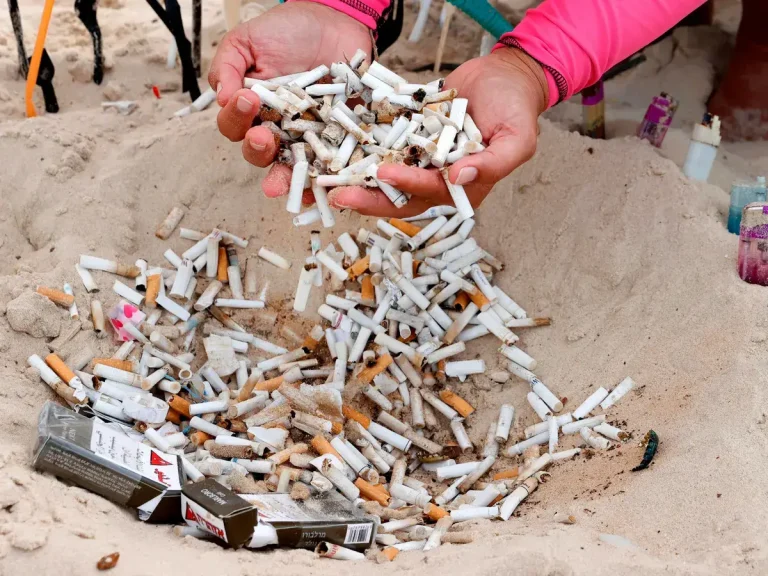Cigarette butts are a significant source of pollution and create an environmental blight on streets, sidewalks, waterways, and beaches. They also increase landfill demands and add to the costs of municipal waste disposal programs.
The cigarette filters themselves are difficult to degrade in the environment and release harmful chemicals toxic to marine life because they seep into the soil and water and endanger human health.
Butts Only Box(r)
Butts Only Box receptacles are designed to make it easy for people to dispose of their cigarette butts without causing harm to the environment. To meet various needs, they are offered in multiple sizes and shapes.
They are made from high-grade 304 stainless steel, which allows for a durable, long-lasting receptacle. They also have a grated opening that keeps human hands and animals out. They can also collect litter that is too large for standard trash cans.
One of the best strategies to reduce cigarette butts pollution is to put plates and trash cans. Using boxes, it has been shown, can reduce the amount of cigarette butts dropped on the ground and in storm drains.
It is a simple but essential solution that can significantly impact the planet. Besides reducing cigarette butt littering, receptacles can help to divert toxins away from waterways by preventing rainwater from contacting cigarette butts and thereby leaching toxic chemicals.
Another benefit of the Butts Only Box(r) is that it can be easily moved from location to location. It is also suitable for areas with much foot traffic, like parks and public spaces.
The Butts Only Box(r) is an excellent example of how innovation can be combined with entrepreneurship to provide consumers with the most environmentally-friendly products and services. It can also inspire people to think about how they can change their lifestyles to minimize pollution and waste.
Butts Only Containers
Discarded cigarette butts are the most littered item in the world. In the United States alone, more than 4.5 trillion butts are dropped on the ground yearly – that’s twice as many as all the cigarette filters flicked into trash bins in the same time frame.
Cigarette butts are non-biodegradable, toxic waste that creates environmental blight. They are challenging to dispose of and are a form of pollution contaminating street drains, streams, and rivers. They also create an increased demand for landfill space and increase the costs of municipalities’ waste disposal programs.
To address this problem, there are many possible solutions. One approach is to implement the extended producer responsibility (EPR) concept. It would allow communities to impose an additional fee on cigarettes to cover the costs of collecting and cleaning up butts. Another option is to adopt a product stewardship law requiring businesses to provide many dedicated receptacles in outdoor public spaces.
Ultimately, changing smokers’ attitudes is essential in reducing cigarette butt waste. It requires enforcing anti-littering laws and educating smokers on the negative impact of their cigarette butt disposal habits. Traditional anti-littering campaigns have had little effect on smokers, and behavioral change may need to be supported by various incentives, including fines, fees, and economic disincentives.
Butts Only Recycling Bins
Cigarette butts are littered worldwide and are a significant cause of pollution. Besides being unsightly, they also can pollute waterways and harm marine life and birds.
For this reason, some states recently launched a cigarette butt recycling program to eliminate this problem by offering receptacles at downtown parks and other public spaces for smokers to drop their butts in after smoking. The city hopes that by providing these receptacles, smokers will avoid flicking their butts on the ground, thus creating an eyesore for everyone.
A team of volunteers mans the receptacles, and every week they will empty the bins and send the butts to be recycled. They will get paid $4 for every pound of butts they recycle.
In addition to reducing cigarette butts in landfills, the program helps reduce the amount of trash in our local waterways. Garbage tossed out on the ground, especially in areas with poor garbage collection systems, often washes into storm drains and ends up in our streams, rivers, and lakes.
Butts are not biodegradable and contain heavy metals, which can contaminate waterways and leach into groundwater.
Butts Only Recycling Containers
As we all know, cigarette butts are a significant problem concerning littering. They often end up on the ground and wash out into our waterways.
Luckily, there are some solutions for this issue. A new cigarette butt recycling program in Seattle has 15 receptacles where smokers can deposit their butts.
These containers are located around the city and near areas where people often smoke, such as park benches. When the butts are deposited into the container, they are swept up by city workers and sent to a recycling company.
Researchers at RMIT University have found that fired-clay bricks incorporating 1 percent of cigarette butts are as strong as regular bricks and use 10 percent less energy to fire them. Moreover, the material is more environmentally friendly and provides better household insulation.

